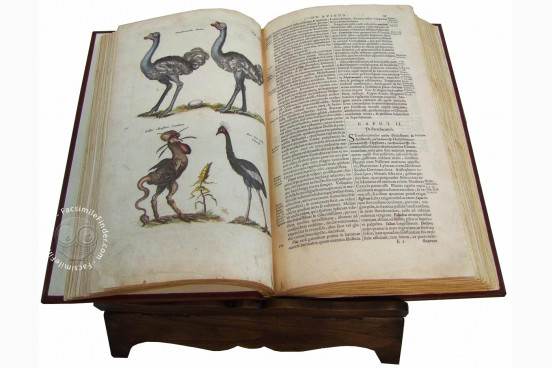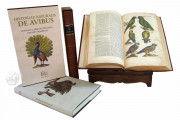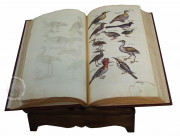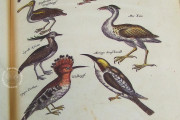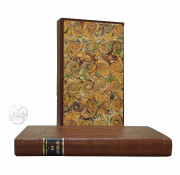Johannes Jonstonus, a Polish-Scottish naturalist and physician, created one of the most influential natural history encyclopedias of the 17th century. His Historia Naturalis represents a significant moment in the development of zoological and botanical knowledge during the scientific revolution. Published between 1650 and 1662, this monumental work served as a bridge between medieval bestiaries and modern scientific classification systems, predating Linnaeus' systematic taxonomy by nearly a century.
General Structure and Methodology
Jonstonus' approach was primarily compilatory, synthesizing the works of earlier authorities like Aristotle, Pliny, Gessner, and Aldrovandi, while incorporating contemporary observations. The Historia Naturalis is distinguished by its systematic organization, concise Latin text, and most notably, its extensive collection of detailed copper engravings that visually cataloged the natural world. These illustrations, mostly executed by Matthäus Merian and his workshop, contributed significantly to the work's popularity and influence throughout Europe.
Volume I: Historia Naturalis de Quadrupedibus (On Four-Footed Animals)
Published in 1650 in Frankfurt, this inaugural volume examines mammals in meticulous detail. Jonstonus divides quadrupeds into several categories including solid-hoofed animals (like horses), cloven-hoofed animals (cattle, sheep, deer), and those with digitated feet (carnivores and rodents). The volume contains approximately 80 plates depicting nearly 250 animal figures.
Volume II: Historia Naturalis de Avibus (On Birds)
Published in 1650, the ornithological volume catalogs the avian world in remarkable detail. Birds are classified according to habitat (water birds, land birds), diet (carnivorous, granivorous), and size. The approximately 62 plates showcase roughly 230 species, many depicted with extraordinary accuracy considering the period.
Volume III: Historia Naturalis de Insectis and De Serpentibus (On Insects and Serpents)
Published in 1653, this double volume combines entomology and herpetology. The insect section organizes specimens by morphology and habitat, while the serpent section covers snakes, lizards, and various reptiles. Together, these sections contain approximately 40 plates.
Volume IV: Historia Naturalis de Piscibus et Cetis (On Fish and Whales)
Published in 1657, this ichthyological volume represents one of the most comprehensive pre-Linnaean studies of aquatic life. Jonstonus categorizes fish according to habitat (sea, river, lake), morphology, and behavior. The volume contains roughly 47 plates illustrating about 400 aquatic species.
Volume V: Historia Naturalis de Exanguibus Aquaticis (On Bloodless Aquatic Animals)
Published in 1657, this volume explores invertebrate marine life, including crustaceans, mollusks, echinoderms, and various other marine invertebrates. With approximately 20 plates, this section represents an early attempt at systematizing marine invertebrate zoology.
Volume VI: Historia Naturalis de Arboribus et Plantis (On Trees and Plants)
Published in 1662, the final volume of the series addresses the plant kingdom. Unlike the preceding zoological volumes, this botanical work was less comprehensive, focusing primarily on trees, shrubs, and commercially relevant plants. The volume contains approximately 37 plates depicting about 230 plant species.
Legacy and Influence
Jonstonus' Historia Naturalis achieved widespread popularity, with multiple editions and translations appearing throughout Europe. Its accessible format, authoritative text, and superior illustrations made it a standard reference for naturalists well into the 18th century. The work's influence extended beyond scientific circles into art, literature, and popular culture, with many of its illustrations reproduced in later works.
Despite its occasional inclusion of mythical creatures and reliance on earlier authorities, the Historia Naturalis represented an important step toward modern zoological and botanical classification. Its systematic approach to organizing the natural world laid groundwork for the taxonomic revolution that would follow with Linnaeus, making it a pivotal work in the history of natural science.
We have 1 facsimile edition of the manuscript "Historia Naturalis": Historia Naturalis: De Avibus facsimile edition, published by Siloé, arte y bibliofilia, 2003
Request Info / Price
